Educational Escape Rooms as an Active Learning Tool for Teaching Telecommunications Engineering
Abstract
:1. Introduction
2. Methodology
2.1. Escape Room 1
2.1.1. Parity
- 010001101
- 010001100
- 010001101
- 010111101
- 010011110
- 010101011
- 010001000
- 010100100
- 010100101
- 010111101
- 010001110
- 0100 0110 0 → 0x46 → F
- 0100 1111 0 → 0x4F → O
- 0101 0101 0 → 0x55 → U
- 0101 0010 0 → 0x52 → R
2.1.2. Longitudinal Redundancy Check (LRC)
2.1.3. Modulation
2.2. Escape Room 2
2.2.1. Hamming
2.2.2. UART
2.2.3. Radio Propagation
3. Evaluation and Results
4. Conclusions
Author Contributions
Funding
Institutional Review Board Statement
Informed Consent Statement
Data Availability Statement
Acknowledgments
Conflicts of Interest
References
- Bonwell, C.C.; Eison, J.A. Active Learning: Creating Excitement in the Classroom; 1991 ASHE-ERIC Higher Education Reports; ERIC: Washington, DC, USA, 1991. [Google Scholar]
- Coorey, J. Active learning methods and technology: Strategies for design education. Int. J. Art Des. Educ. 2016, 35, 337–347. [Google Scholar] [CrossRef]
- Carr, R.; Palmer, S.; Hagel, P. Active learning: The importance of developing a comprehensive measure. Act. Learn. High. Educ. 2015, 16, 173–186. [Google Scholar] [CrossRef] [Green Version]
- De Caprariis, P.; Barman, C.; Magee, P. Monitoring the benefits of active learning exercises in introductory survey courses in science: An attempt to improve the education of prospective public school teachers. J. Scholarsh. Teach. Learn. 2001, 1, 13. [Google Scholar]
- Prince, M. Does active learning work? A review of the research. J. Eng. Educ. 2004, 93, 223–231. [Google Scholar] [CrossRef]
- Becker, K. What’s the difference between gamification, serious games, educational games, and game-based learning. Acad. Lett. 2021, 209. [Google Scholar] [CrossRef]
- Majuri, J.; Koivisto, J.; Hamari, J. Gamification of education and learning: A review of empirical literature. In Proceedings of the 2nd International GamiFIN Conference, GamiFIN 2018, CEUR-WS, Pori, Finland, 21–23 May 2018. [Google Scholar]
- Kapp, K.M. The Gamification of Learning and Instruction: Game-Based Methods and Strategies for Training and Education; John Wiley & Sons: Hoboken, NJ, USA, 2012. [Google Scholar]
- Dicheva, D.; Dichev, C.; Agre, G.; Angelova, G. Gamification in education: A systematic mapping study. Educ. Technol. Soc. 2015, 18, 75–88. [Google Scholar]
- Nolan, J.; McBride, M. Beyond gamification: Reconceptualizing game-based learning in early childhood environments. Inform. Commun. Soc. 2014, 17, 594–608. [Google Scholar] [CrossRef] [Green Version]
- Soler-Porta, M.; Caña-Palma, R.; Bentabol-Manzanares, M.J.; Cortes-Fernandez, L.; Bentabol-Manzanares, M.A.; Muñoz-Martos, M.d.M.; Esteban-Pagola, A.I.; Luna-Jimenez, M.J.; Lopes, A.P. Gamificacion in education and active methodologies at Higher education. In Proceedings of the EDULEARN19 Conference, IATED, Palma, Spain, 1–3 July 2019. [Google Scholar]
- Macho-Stadler, E.; Jesús Elejalde-García, M. Case study of a problem-based learning course of physics in a telecommunications engineering degree. Eur. J. Eng. Educ. 2013, 38, 408–416. [Google Scholar] [CrossRef]
- Aliakbarian, H.; Soh, P.J.; Farsi, S.; Xu, H.; Van Lil, E.H.; Nauwelaers, B.K.; Vandenbosch, G.A.; Schreurs, D.M.P. Implementation of a project-based telecommunications engineering design course. IEEE Trans. Educ. 2013, 57, 25–33. [Google Scholar] [CrossRef] [Green Version]
- Duarte, M.; Oliveira, I.; Félix, H.; Carrilho, D.; Pereira, A.; Direito, I. Active classrooms: Role-playing experience in telecommunications engineering education. Int. J. Eng. Educ. 2011, 27, 604–609. [Google Scholar]
- D’Andrea, A.N.; Giannetti, F.; Manara, G.; Michelini, M.; Nepa, P. A virtual educational laboratory for telecommunications engineering. Int. J. Eng. Educ. 2008, 24, 144–152. [Google Scholar]
- Diniz, P.; Veiga, A.; Rocha, G. Adapting team-based learning for application in telecommunications engineering using software-defined radio. Int. J. Electr. Eng. Educ. 2019, 56, 238–250. [Google Scholar] [CrossRef]
- Wiemker, M.; Elumir, E.; Clare, A. Escape room games. Game Based Learn. 2015, 55, 55–75. [Google Scholar]
- Nicholson, S. Peeking behind the Locked Door: A Survey of Escape Room Facilities. 2015. Available online: http://scottnicholson.com/pubs/erfacwhite.pdf (accessed on 1 December 2020).
- Vörös, A.I.V.; Sárközi, Z. Physics escape room as an educational tool. AIP Conf. Proc. 2017, 1916, 050002. [Google Scholar]
- Neumann, K.L.; Alvarado-Albertorio, F.; Ramírez-Salgado, A. Online approaches for implementing a digital escape room with preservice teachers. J. Technol. Teach. Educ. 2020, 28, 415–424. [Google Scholar]
- Detwiler, S.; Jacobson, T.; O’Brien, K. BreakoutEDU: Helping students break out of their comfort zones. Coll. Res. Libr. News 2018, 79, 62. [Google Scholar] [CrossRef] [Green Version]
- Ross, R. Design of an open-source decoder for educational escape rooms. IEEE Access 2019, 7, 145777–145783. [Google Scholar] [CrossRef]
- Ross, R.; Bennett, S. Increasing Engagement with Engineering Escape Rooms. IEEE Trans. Games 2020. [Google Scholar] [CrossRef]
- Eukel, H.N.; Frenzel, J.E.; Cernusca, D. Educational Gaming for Pharmacy Students–Design and Evaluation of a Diabetes-themed Escape Room. Am. J. Pharm. Educ. 2017, 81, 6265. [Google Scholar] [CrossRef]
- López-Pernas, S.; Gordillo, A.; Barra, E.; Quemada, J. Examining the use of an educational escape room for teaching programming in a higher education setting. IEEE Access 2019, 7, 31723–31737. [Google Scholar] [CrossRef]
- Ross, R.; Bell, C. Turning the classroom into an escape room with decoder hardware to increase student engagement. In Proceedings of the 2019 IEEE Conference on Games (CoG), London, UK, 20–23 August 2019; pp. 1–4. [Google Scholar]
- Gómez-Urquiza, J.L.; Gómez-Salgado, J.; Albendín-García, L.; Correa-Rodríguez, M.; González-Jiménez, E.; Cañadas-De la Fuente, G.A. The impact on nursing students’ opinions and motivation of using a “Nursing Escape Room” as a teaching game: A descriptive study. Nurse Educ. Today 2019, 72, 73–76. [Google Scholar] [CrossRef] [PubMed]
- Yayon, M.; Rap, S.; Adler, V.; Haimovich, I.; Levy, H.; Blonder, R. Do-It-Yourself: Creating and Implementing a Periodic Table of the Elements Chemical Escape Room. J. Chem. Educ. 2019, 97, 132–136. [Google Scholar] [CrossRef]
- Clarke, S.; Peel, D.J.; Arnab, S.; Morini, L.; Keegan, H.; Wood, O. EscapED: A framework for creating educational escape rooms and interactive games For higher/further education. Int. J. Serious Games 2017, 4, 73–86. [Google Scholar] [CrossRef] [Green Version]
- Nicholson, S. Creating engaging escape rooms for the classroom. Child. Educ. 2018, 94, 44–49. [Google Scholar] [CrossRef]
- Dunlop, J. Telecommunications Engineering; Routledge: London, UK, 2017. [Google Scholar]
- Elumir, E. 13 Rules for Escape Room Puzzle Design. Available online: http://web.archive.org/web/20080207010024/http://www.808multimedia.com/winnt/kernel.htm (accessed on 11 March 2021).
- Katircioğlu, O.; Isel, H.; Ceylan, O.; Taraktas, F.; Yagci, H.B. Comparing ray tracing, free space path loss and logarithmic distance path loss models in success of indoor localization with RSSI. In Proceedings of the 2011 19th Telecommunications Forum (TELFOR) Proceedings of Papers, Belgrade, Serbia, 22–24 November 2011; pp. 313–316. [Google Scholar]
- Jiang, M.; Ting, E. A study of factors influencing students’ perceived learning in a web-based course environment. Int. J. Educ. Telecommun. 2000, 6, 317–338. [Google Scholar]
- Fotaris, P.; Mastoras, T. Escape rooms for learning: A systematic review. In Proceedings of the European Conference on Games Based Learning, Odense, Denmark, 3–4 October 2019; pp. 235–243. [Google Scholar]
- Admiraal, W.; Huizenga, J.; Akkerman, S.; Ten Dam, G. The concept of flow in collaborative game-based learning. Comput. Hum. Behav. 2011, 27, 1185–1194. [Google Scholar] [CrossRef] [Green Version]
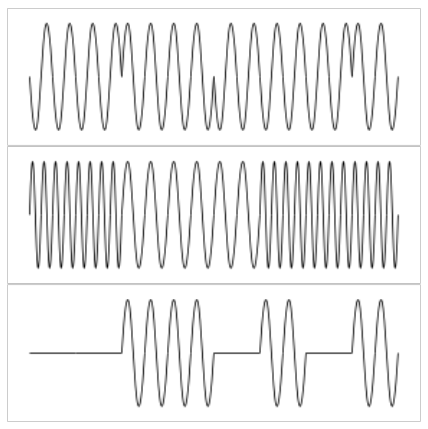
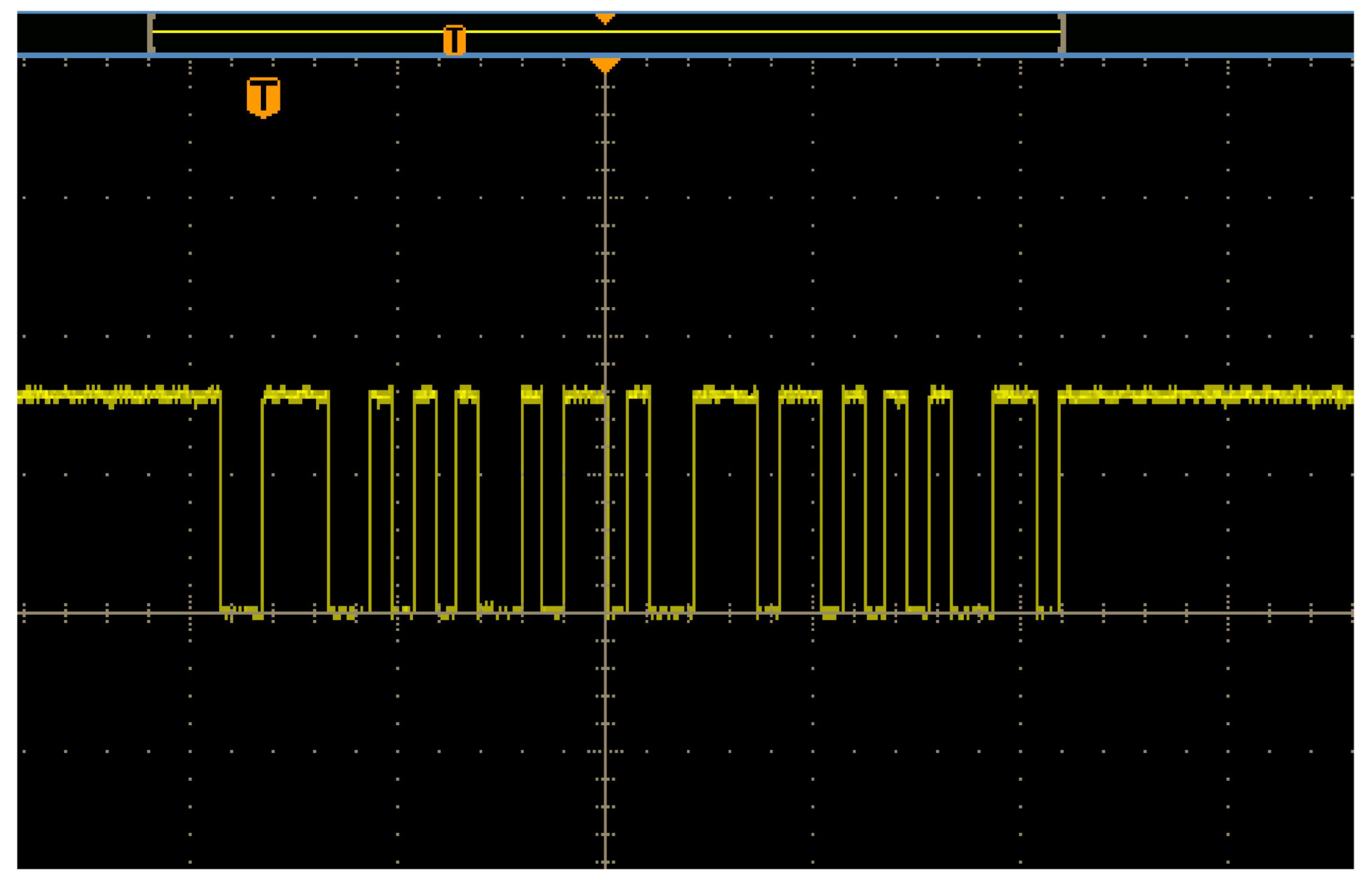
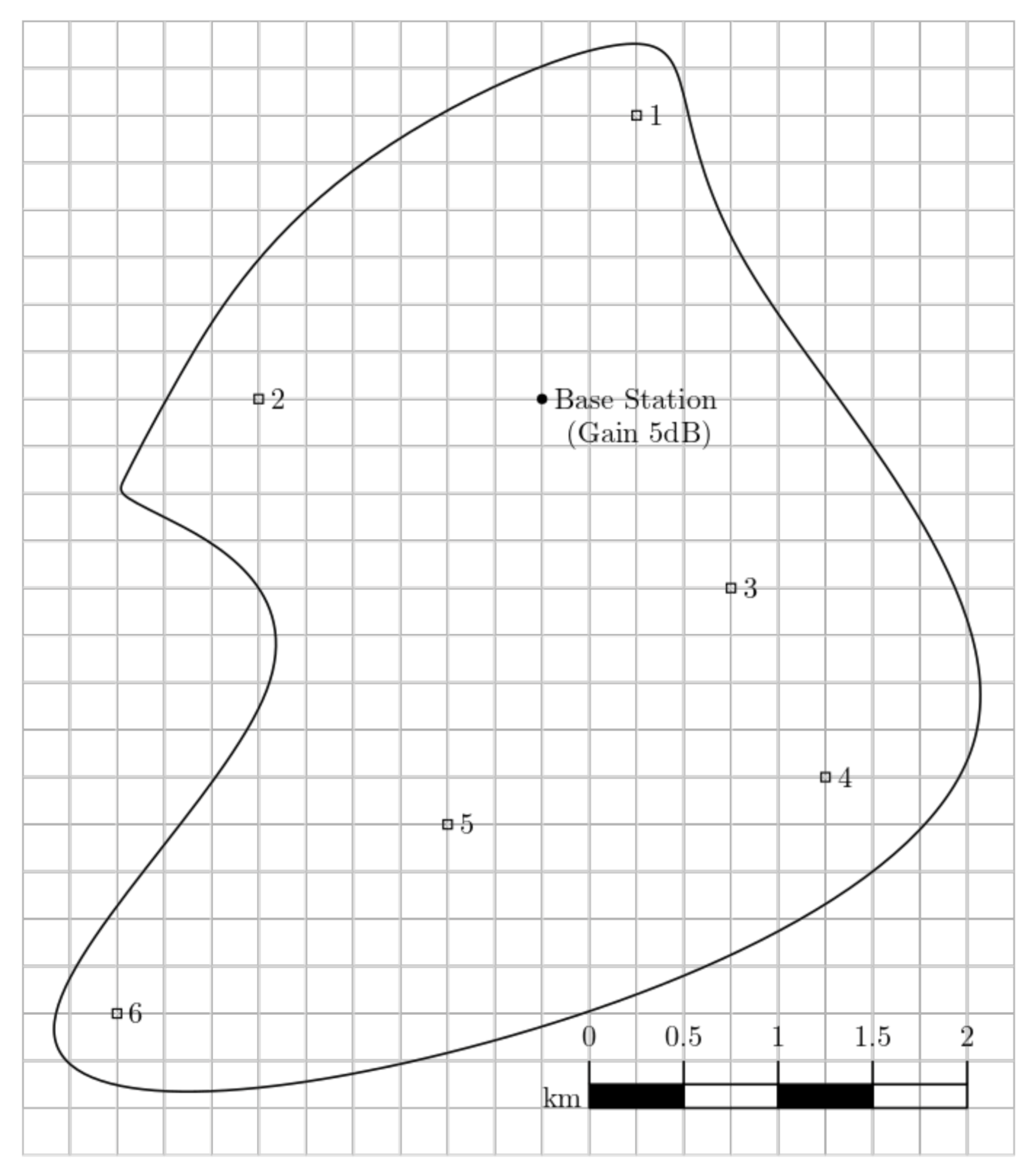
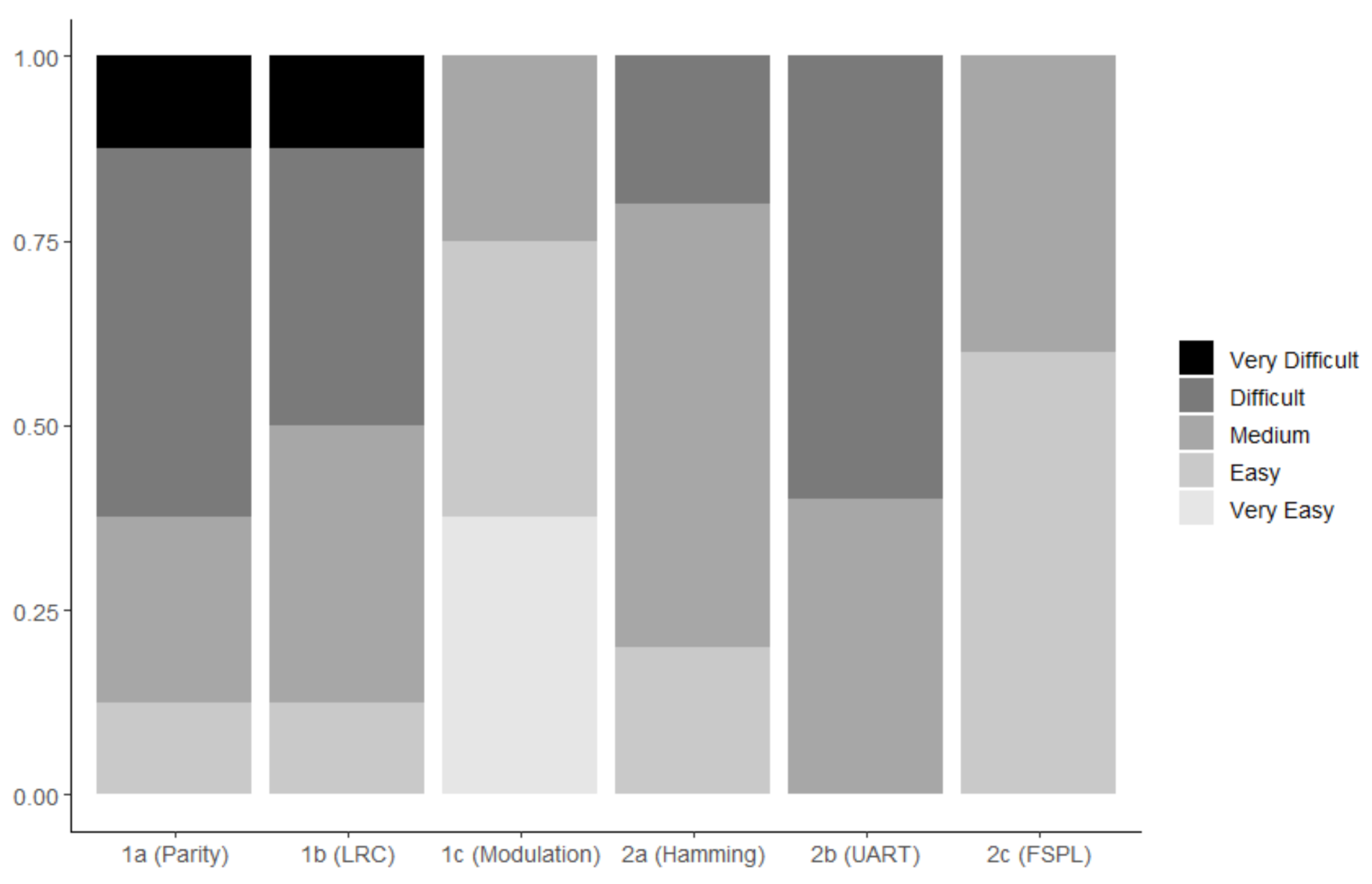
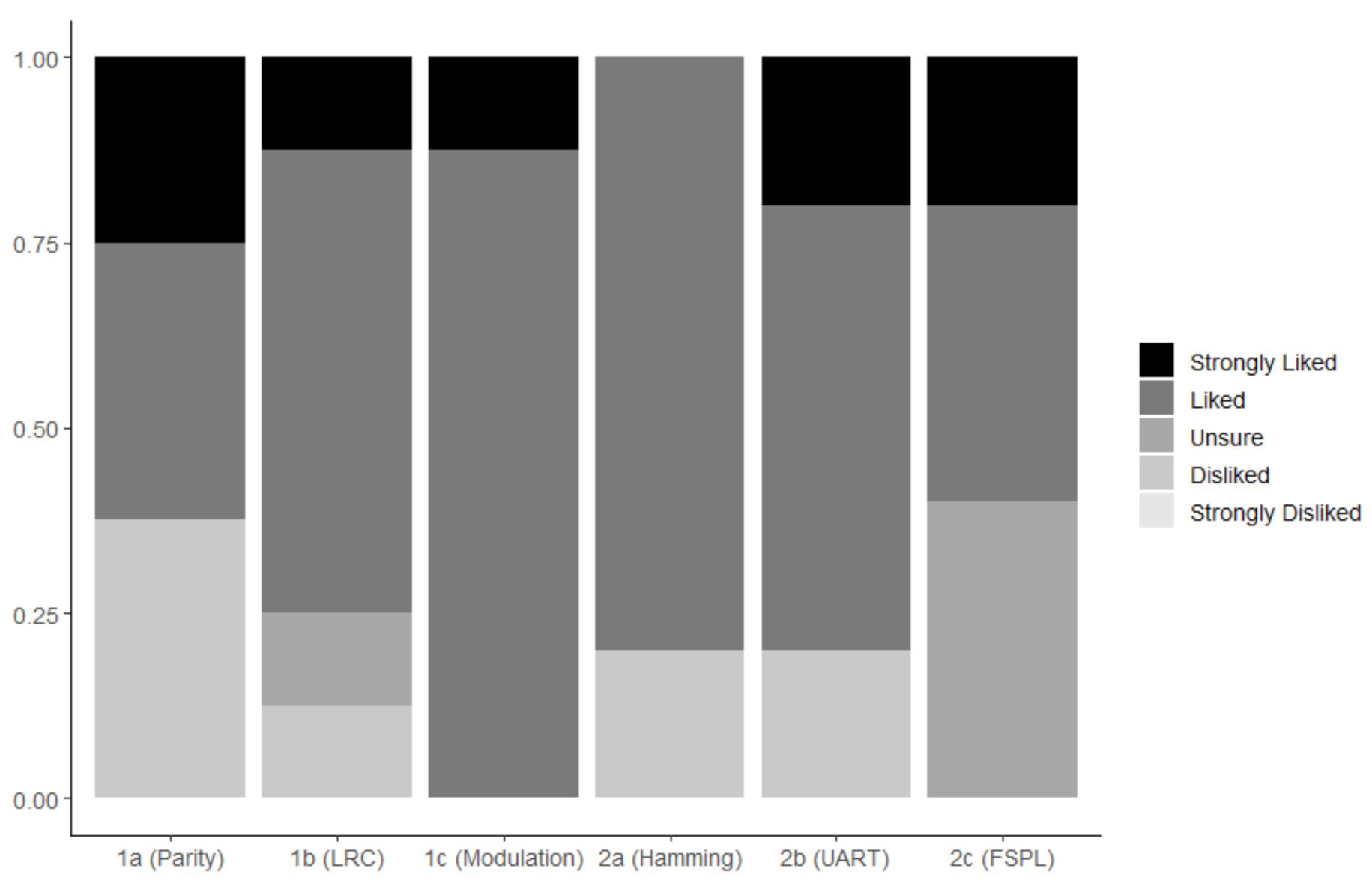
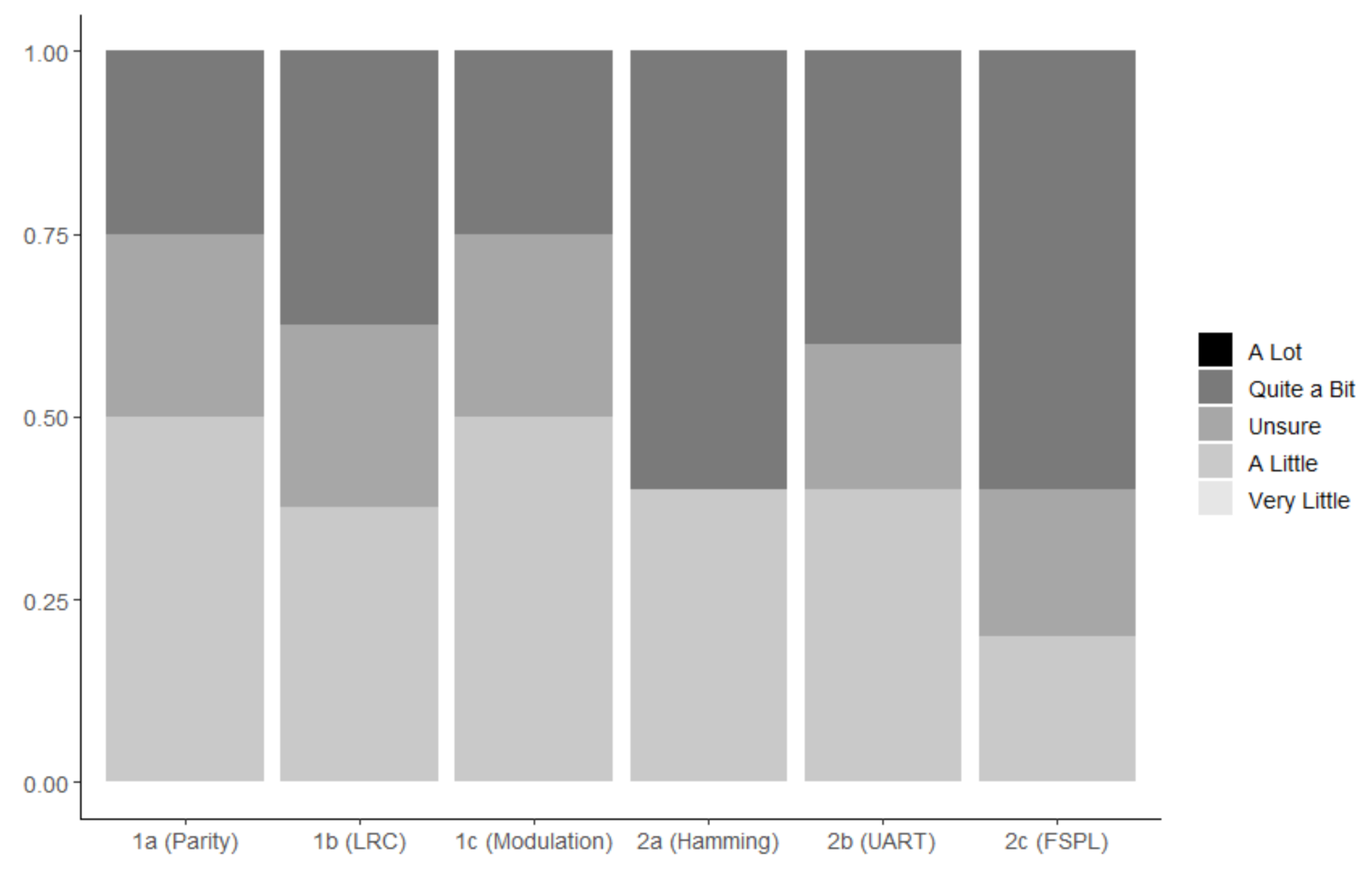
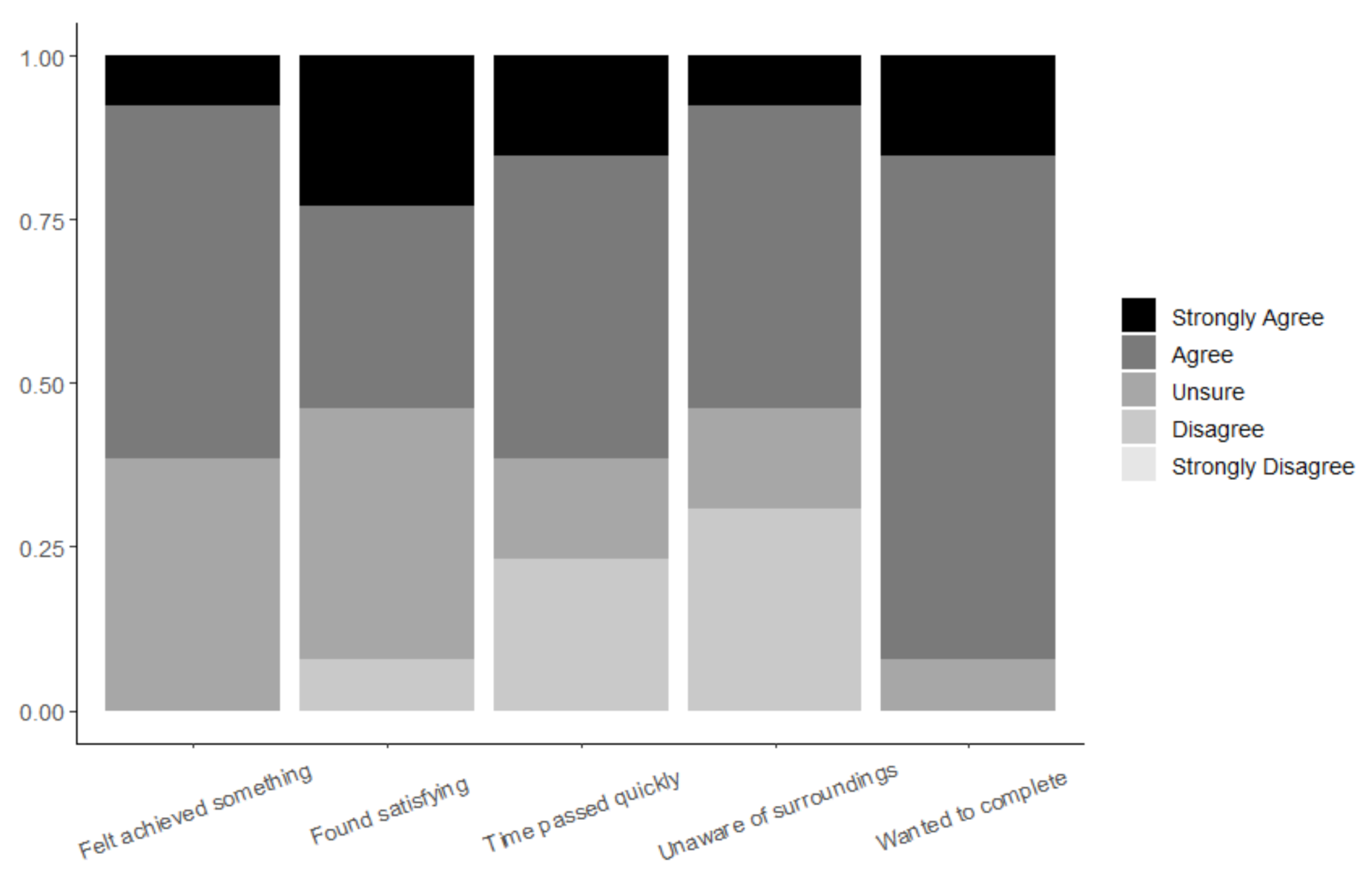
| HEX | Decoded Value | Binary | XOR |
|---|---|---|---|
| 0x43 | C | 01000011 | 01000011 |
| 0x6f | o | 01101111 | 00101100 |
| 0x6d | m | 01101101 | 01000001 |
| 0x70 | p | 01110000 | 00110001 |
| 0x75 | u | 01110101 | 01000100 |
| 0x74 | t | 01110100 | 00110000 |
| 0x65 | e | 01100101 | 01010101 |
| 0x20 | <Space> | 00100000 | 01110101 |
| 0x58 | X | 01011000 | 00101101 |
| Bit Position | 1 | 2 | 3 | 4 | 5 | 6 | 7 |
|---|---|---|---|---|---|---|---|
| Value | P1 | P2 | D1 | P3 | D2 | D3 | D4 |
Publisher’s Note: MDPI stays neutral with regard to jurisdictional claims in published maps and institutional affiliations. |
© 2021 by the authors. Licensee MDPI, Basel, Switzerland. This article is an open access article distributed under the terms and conditions of the Creative Commons Attribution (CC BY) license (https://creativecommons.org/licenses/by/4.0/).
Share and Cite
Ross, R.; de Souza-Daw, A. Educational Escape Rooms as an Active Learning Tool for Teaching Telecommunications Engineering. Telecom 2021, 2, 155-166. https://doi.org/10.3390/telecom2020010
Ross R, de Souza-Daw A. Educational Escape Rooms as an Active Learning Tool for Teaching Telecommunications Engineering. Telecom. 2021; 2(2):155-166. https://doi.org/10.3390/telecom2020010
Chicago/Turabian StyleRoss, Robert, and Anthony de Souza-Daw. 2021. "Educational Escape Rooms as an Active Learning Tool for Teaching Telecommunications Engineering" Telecom 2, no. 2: 155-166. https://doi.org/10.3390/telecom2020010
APA StyleRoss, R., & de Souza-Daw, A. (2021). Educational Escape Rooms as an Active Learning Tool for Teaching Telecommunications Engineering. Telecom, 2(2), 155-166. https://doi.org/10.3390/telecom2020010







